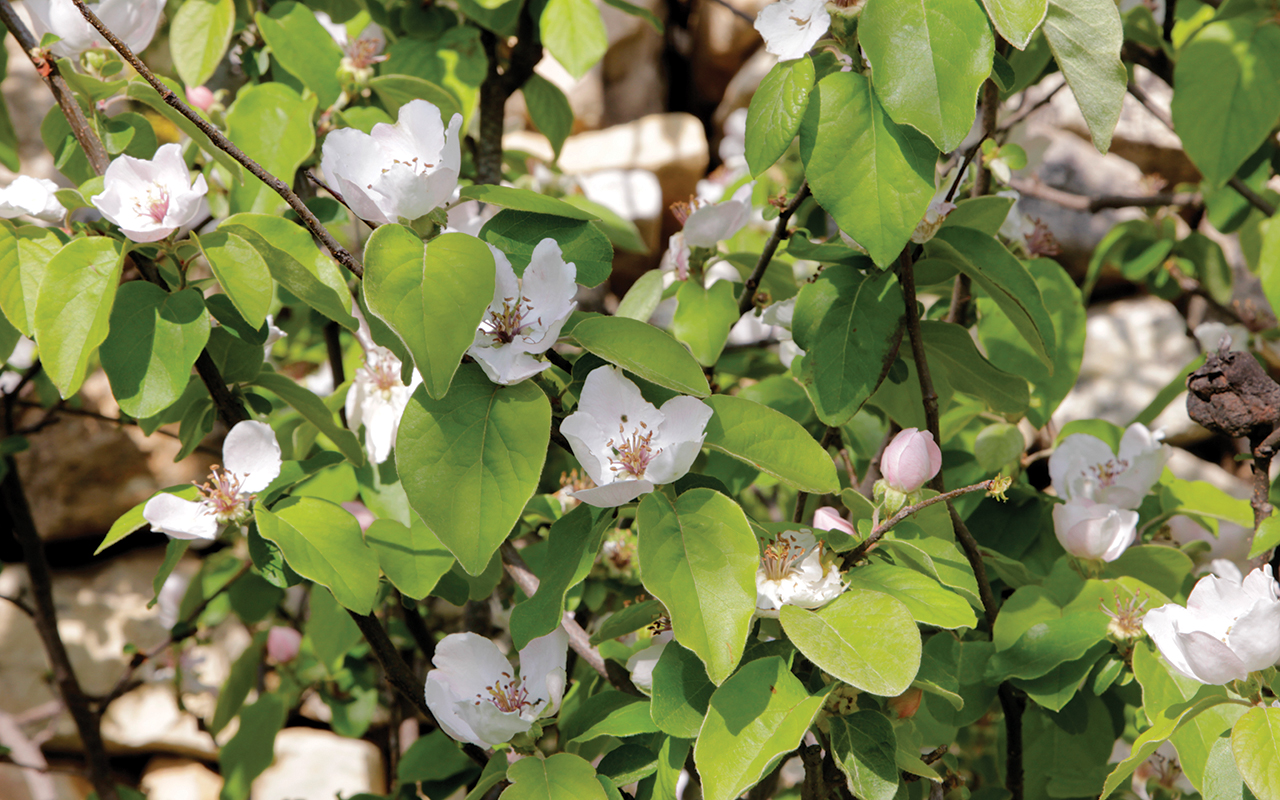
Quince
Cydonia oblonga Mill. (C. vulgaris)
Rosaceae
Quince is native to numerous Asian countries, such as Uzbekistan, Iran, Georgia and Iraq. Cydonia refers to an old city in Crete, and oblonga means long; vulgaris means common. Quince is a deciduous tree, belonging to the family Rosaceae (the family of pears and apples). It blooms in the spring, producing decorative white and pink flowers that later bear hard, astringent fruit that is usually larger than pears.
Agriculturally, quince is used as a dwarf rootstock for pears, although it is not compatible with all varieties. The grafted plant types appear to bear fruit at an earlier age. Quince is believed to impart health benefits because it is vitamin-rich. It is used in traditional medicine to relieve the symptoms of jaundice and headache. Its seeds are also diuretic.
The plant has been known since ancient times and was called supurgillu in Akkadian, which Syrians pronounced safarjal, giving the tree its Arabic name. Historically, quince was cultivated for its hard fruit from which a jam is made. The fruit was also oven-roasted whole until tender and easily eaten. The hardness of its fruit is acknowledged in a folk saying: “How well I remember you, O Quince, bite by bite, to the last.”
Commercial cultivation of quince is very limited in Palestine. However, it is planted in gardens for the decorative beauty of its blossoms. The quince is mentioned in numerous sayings, including: ‘Our guys are a sweet breeze like quince grafted on apple trees’; and ‘like quince flowers, just one in a hundred grows right.’
Source: A Garden Among the Hills: The Floral Heritage of Palestine. © The Palestinian Museum 2019